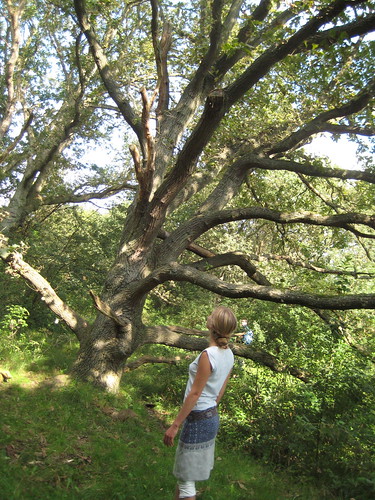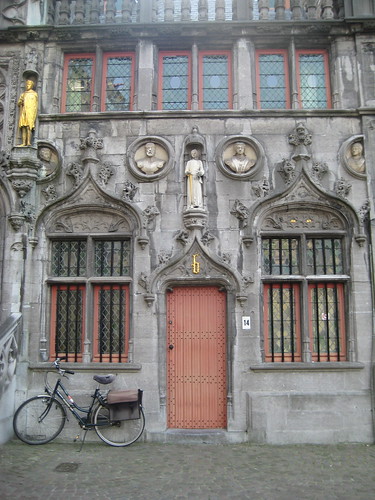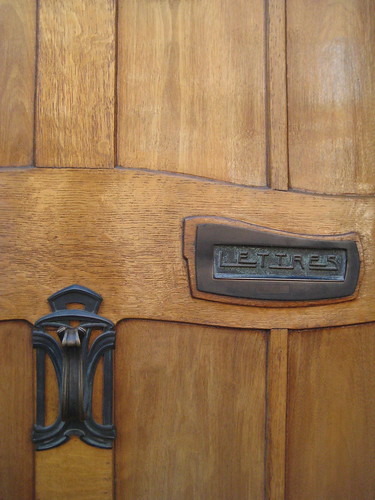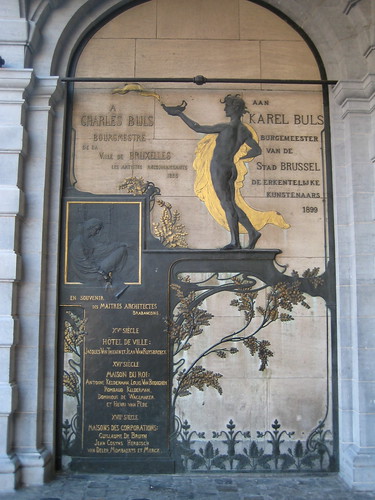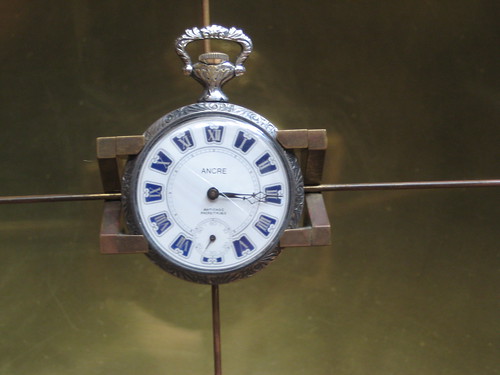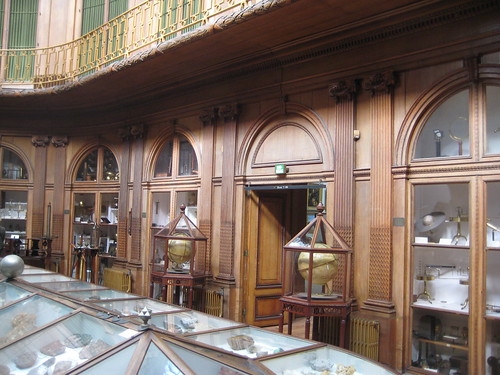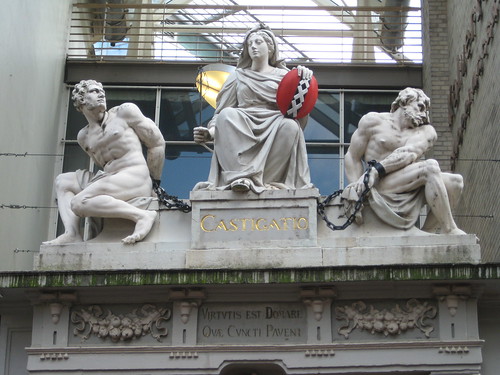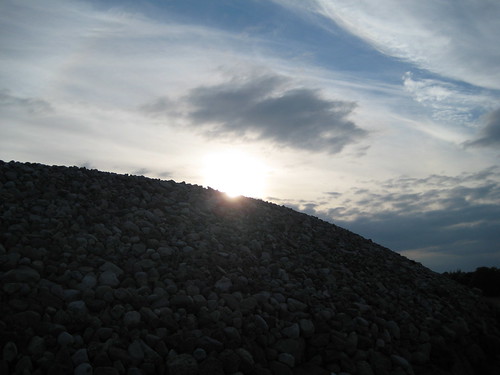27/7/08
Dublin, Ballina
When travelling, one's first few days usually seem an exercise in calculating precisely how many things one can possibly do wrong in such a brief period of time. If one has a decent sense of humour about such things, it quickly begins to resemble a delightful game.
I escaped from the airport easily, but on the way to my first host managed to get off the bus a stop or two too soon at a shopping complex with the same name and containing most of the same landmarks for which I'd been told to look. After only three minutes or so of my standing around looking confused, stubbornly refusing to be the lost American asking for directions, a spectacularly nice woman named Mary asked me if I was lost, scooped me up in her car, and drove me to the correct stop. I hope I won't sound too presumptuous if I admit that half the reason I didn't bother worrying when I noticed the mess into which I'd gotten myself was that I knew I'd be rescued. Irish people are good.
My first host was an American gentleman named Adam, and his flat was bloody breathtaking. One entire wall of the place was nothing but windows, leading out to a balcony overlooking a fountain. I had my own room with a huge bed. I think I slept on white sheets for the first time in my life. His kitchen was so fancy it was discreet: the ovens (plural!) which somehow doubled as microwaves and refrigerator and things were camouflaged as sleek, modern cabinetry. My bathroom (I had my own bathroom, too) was all marble, stocked with designer soaps for my use, and featured both a heated floor and a bathtub and shower raised up from the floor like an altar, the shower-head luxuriously wide and descended straight down from the ceiling. My first couch surfing experience spoiled me beyond anything I ever would have expected. We stayed up late (or, depending upon the time zone, to a perfectly reasonable hour) talking my first night there. The point of couch surfing, far more than finding free places to stay, is meant to be meaningful cross-cultural exchange. I was a bit disappointed at first to find that my first experience with the site would be with another American. I shouldn't have worried. We'd come from rather different backgrounds, and got along quite well. I don't always think kindly of those who were born wealthy, and yet this man was generous enough to open his home to travellers, to share a meal and good conversation. I learned from Adam something more of the value of a good handshake (he once got a fabulous job by figuring out how to shake the hand of a gentleman who had managed to break both of his arms. The trick was a good, solid elbow bump.) and a fantastic pasta recipe I hope I'll remember. It involved ravioli, pesto, gorgonzola, a bit of parmesan, and mandarin orange slices, of all things.
I spent most of my first few days wandering about Dublin, which is, so far as I've ever been able to understand it, the only way to move around Dublin at all. I remember entire streets in great detail, but cannot usually make sense of how one connects to the other. As I recall, I wasn't all that much better at it when I'd been living there for a few months. I found most of the shops and landmarks I'd enjoyed five years ago, quite impressed to discover that most of the businesses were still running. I accidentally took a nap in Saint Stephen's Green. I met up with Adam, one of my dear friends from University College Dublin, for a few pints at the George and at the Dragon. Adam is fantastic, and I really hope to meet up with him again when I get back to Dublin in a week or so.
The next morning I woke up early and a touch hung-over to run for the bus to take me to Ballina, well on the other side of Ireland. The ride was really lovely, once my stomach decided to stop complaining. Living in cities I often forget just how big the sky can be.
Usually when travelling I go from city to city, and part of my goal this time is to force myself out of that habit, to see some of the countryside and some smaller towns as well. I'll admit, however, that so far Ballina, a town in County Mayo, has not impressed me much. City people are much kinder to people like me. Still, I suppose there must be such a thing as rural charm. I've been making attempts to convince myself that I can see it by taking boring pictures of fields. Perhaps I'll feel differently once I've seen the things I've come here to see.
My hosts are lovely, though. I'm currently staying with: a Spaniard, a German, a Norwegian, and an Italian. They're all boys. They all work for the same company testing new video games. And they don't all live together exactly, but they act as if they do, eating one another's food, sleeping on one another's sofas, and wrestling like adorable, manly children.
Today I hope to take a long walk to find a dolmen or some such thing that exists somewhere outside of the town, as there is only one bus going each way on Sunday, the one coming back occurring before the one going out.
28/9/08
Apparently that long walk would have been eighteen miles each way. Fortunately, however, I met Dawn, a lovely Parisian girl with a car. She's been living in Ballina for nine years. She retains her gloriously thick French accent to the last, except for when she curses, a thing she does with a perfect Irish inflection. She is another couch surfing host, and she was kind enough to drive Carles, my true host among the four, and I out to see Ceide Fields, the closest local Neolithic site, and Carrowmore, one of the two I'd been hoping to see. Ceide Fields turned out to be a peat bog in which they'd found some pots and walls and things. The pots weren't on display, but there was apparently plenty of peat underfoot and a whole host of midges in the air. The view, however, was simply unbelievable. We stood on the first of a long series of immense, rounded cliffs jutting out into the Atlantic, disappearing into fog.
Ceide Fields is located a bit more than two towns further northwest along the coast. Carrowmore is perhaps five or so towns east, nearing Sligo town. We drove fast on wildly curving two lane roads through fields and along the edges of the cliffs. We passed a round tower, and ancient crumbling walls still hedging in cattle, and under the most amazing white skies.
Magpies, by the by, are bastards. They insist upon doing the most delightful nonsense in the prettiest of places and then, as soon as I've got my camera ready, ducking under something. Smart, rakish creatures.
Carrowmore isn't just one site, but a whole series. Scholarship suggests it to be some of the oldest Irish megalithic structures, with similar constructions increasing in complexity over time as the work moved Southeast towards Newgrange. Carrowmore is a valley, cradled by gentle mountains on all sides. The several stone circles located at the site then only heighten the impression one already had of being held. I laid down or curled up or sprawled out in several of them, my back and my boots up on the rocks, or grass in my hair. They were ritual sites, and burial grounds. At the centre of the complex is a big artificial hill made of piled stones, fist and skull sized. The centre is carved out, first a passageway and then a wider round opening at the centre, like a womb. There's a dolmen inside of it, several large boulders arranged together with a flat capstone on top. I tried to climb under it between a space in the rocks. I nearly made it, but, afraid of destroying something beautiful, almost certainly needlessly so, in the end was satisfied with having gotten my trousers admirably dirty in the attempt. I have a few dozen pictures of the site. Fields. Rocks. Sky.
While driving Dawn told me about her father, a fisherman, and his tricks. He'd make a special mixture of bread and some other things. She didn't say what, and I didn't think it right to ask. He'd dump some in the water at night where he intended to fish the next day. When he returned he'd add more, and of course all of the fish would come to him rather than the other sportsmen. Before she moved to Ballina her father knew of it, calling it the salmon capital of the world. By the time we returned from caressing stones most of the shops were closed, or else I would have cooked some. The river and bridges here are filled with fishermen. I should have guessed before being told.


